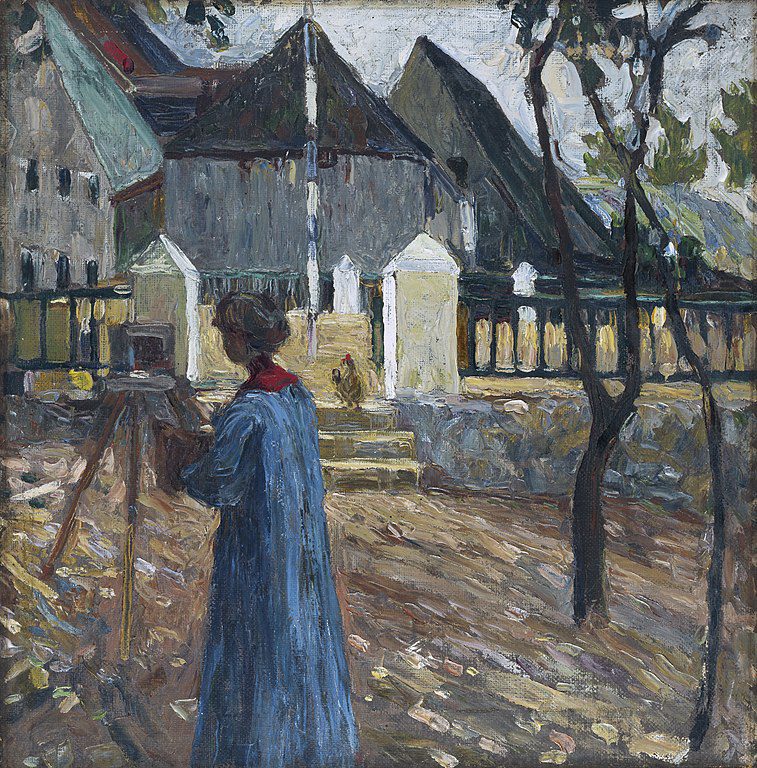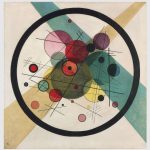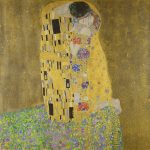
In the early 20th century, when the world was on the cusp of cultural and artistic revolutions, two pioneering artists found themselves at the center of a story that was as bold and transformative as the art they created. Wassily Kandinsky, often regarded as the father of abstract art, and Gabriele Münter, a trailblazer in her own right, were not only collaborators but also lovers whose shared passion fueled the avant-garde movement.
Their love story, set against the backdrop of a rapidly changing Europe, is one of great artistic synergy, personal conflict, and ultimate heartbreak. Together, they built a legacy that would define Expressionism, yet their personal journey was anything but harmonious. From the idyllic years spent painting in the Bavarian Alps to the wrenching separation brought on by war, their relationship reflects both the beauty and the chaos of the human spirit.
This article delves into the complexities of Kandinsky and Münter’s love story, exploring the interplay between their personal connection and their profound contributions to modern art. Their tale, at once tender and tragic, offers a unique glimpse into the intersection of love and creativity.
The Meeting: A Union of Art and Souls
When Gabriele Münter joined the Phalanx School of Painting in Munich in 1902, she was a young artist eager to make her mark in a world that often sidelined women’s contributions to the arts. Wassily Kandinsky, her teacher, was already an established figure in artistic circles, known for his magnetic personality and innovative ideas. Although Kandinsky was married at the time, the connection between the two was immediate and electric.
For Münter, Kandinsky was more than just a teacher—he was a mentor who encouraged her to break free from traditional artistic constraints. Under his guidance, she began to develop her bold, expressive style, experimenting with vibrant colors and emotional depth. Kandinsky, in turn, found in Münter a kindred spirit, someone who not only understood his vision but also shared his desire to challenge the conventions of the art world.
Their relationship soon grew beyond the confines of the classroom. By 1903, they had embarked on a passionate love affair that defied societal norms. Münter’s quiet determination complemented Kandinsky’s more fiery, ambitious nature, and together they began a journey that would forever alter the course of their lives—and of art itself.
Love and Creativity: Their Life Together
Kandinsky and Münter’s partnership was a true fusion of love and creativity. From the earliest days of their relationship, they inspired each other to push the boundaries of artistic expression. Their travels across Europe and North Africa became an integral part of their creative process, exposing them to new landscapes, cultures, and artistic techniques. These experiences enriched their work, infusing it with the vibrant energy that would come to define the Expressionist movement.
One of their most significant periods together was their time in Murnau, a picturesque Bavarian town surrounded by the Alps. In 1909, they settled there, transforming a modest home into a dynamic studio space where their artistic ideas could flourish. The natural beauty of the region—its vivid skies, rolling meadows, and dramatic mountain peaks—became a source of endless inspiration. Both Kandinsky and Münter painted prolifically during this time, producing some of their most celebrated works.
In Murnau, they also laid the groundwork for the Der Blaue Reiter (The Blue Rider) group, which they co-founded with Franz Marc in 1911. This movement sought to break away from traditional artistic constraints, emphasizing the emotional and spiritual dimensions of art. Kandinsky’s abstract compositions and Münter’s bold, colorful landscapes epitomized the group’s ideals, showcasing the unique but complementary strengths of their artistic styles.
However, their relationship was not without its challenges. Kandinsky’s strong-willed nature often clashed with Münter’s quieter demeanor, and their differing approaches to art sometimes led to tension. Yet, despite these conflicts, their shared passion for creativity sustained their partnership for over a decade.
The Strains of War and Separation
The outbreak of World War I in 1914 marked a turning point in Kandinsky and Münter’s relationship. As a Russian national, Kandinsky was forced to leave Germany, returning to his homeland. Although they initially vowed to reunite, the distance and the chaos of war placed an immense strain on their bond.
During his time in Russia, Kandinsky became increasingly preoccupied with the cultural and political upheavals of the Revolution. His letters to Münter, once filled with affection and longing, grew more sporadic and detached. Münter, left behind in Europe, struggled with feelings of abandonment and uncertainty. The idyllic life they had built together in Murnau seemed like a distant memory, replaced by the harsh realities of a world at war.
The final blow came in 1917 when Kandinsky married another woman. For Münter, this was a devastating betrayal that shattered her trust and left her questioning the sincerity of the love they had shared. The pain of their separation lingered long after their romantic and artistic partnership came to an end.
Gabriele Münter’s Resilience and Legacy
Despite the heartbreak of Kandinsky’s departure, Münter proved to be remarkably resilient. She continued to paint, though her work took on a darker, more introspective tone. In the years that followed, she also became a guardian of Kandinsky’s legacy, safeguarding his early works during the tumult of World War II. These efforts ensured that the groundbreaking art they had created together would survive for future generations to appreciate.
Münter’s own contributions to modern art, however, were often overshadowed by Kandinsky’s fame. As a woman in a male-dominated field, she faced significant challenges in gaining recognition for her work. Yet her vibrant landscapes and expressive portraits stand as a testament to her unique vision and undeniable talent.
In the latter part of her life, Münter received the recognition she had long deserved. Retrospectives of her work highlighted her role as a pioneering figure in Expressionism, affirming her place in art history as more than just Kandinsky’s muse. She was an artist of extraordinary depth and resilience, whose legacy endures as a testament to her strength and creativity.
Themes in Their Love Story
The relationship between Kandinsky and Münter was as complex and multifaceted as the art they created. At its core, their love story reflects the delicate balance between personal and professional growth. For Kandinsky, Münter was both a source of inspiration and a partner in his artistic endeavors. For Münter, Kandinsky’s mentorship and encouragement helped her to develop her own voice as an artist, even as his dominance sometimes overshadowed her achievements.
Their story also speaks to the societal constraints of their time. As an unmarried couple, they defied convention, but the pressures of war and the expectations placed on women in the early 20th century ultimately shaped the trajectory of their relationship. Münter’s ability to persevere in the face of these challenges underscores her remarkable resilience and determination.
Ultimately, their love was both a source of great joy and profound sorrow—a reminder of the complexities of human relationships and the transformative power of art.
Passion, Creativity and Heartbreak
The love story of Wassily Kandinsky and Gabriele Münter is one of passion, creativity, and heartbreak. Together, they forged a path that reshaped the art world, leaving a legacy that continues to inspire generations of artists. Yet, their personal journey was marked by the same intensity and turbulence that defined their work.
Though their romance ended in separation, the impact of their time together endures. The art they created during their years as partners stands as a testament to the profound connection they shared—a connection that, despite its challenges, left an indelible mark on modern art.
In reflecting on their story, we are reminded that love and creativity are often intertwined, each shaping and enriching the other in ways that are as beautiful as they are unpredictable. For Kandinsky and Münter, their love was both a source of inspiration and a crucible of growth, a legacy that will forever be etched into the history of art.




